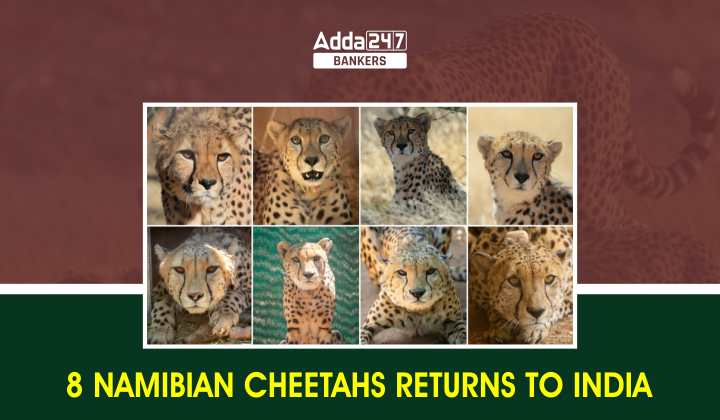Table of Contents
8 Namibian Cheetahs Return to Indian Soil After 70 years: The cheetahs have returned to India, where they had been extinct domestically for more than 70 years. Prime Minister Modi hailed the cheetahs’ release into Indian wildlife as a momentous day. The big cats were transported by helicopter to Kuno National Park in Madhya Pradesh from Namibia’s capital, Windhoek.
8 Namibian Cheetahs Return to Indian Soil After 70 years: Highlights
- On the occasion of his 72nd birthday, Indian Prime Minister Modi released eight big cats into the wild.
- Cheetahs were reintroduced into the Indian fauna in Kuno-Palpur National Park in Madhya Pradesh (KPNP).
- They have returned to India after 70 years of being extinct from the country.
- Asiatic cheetahs once lived in India, but the country declared the species extinct in 1952.
- This arrival of cheetahs from Namibia is considered the biggest wildlife translocation project in history.
- These cheetahs were chosen based on an evaluation of their health, wild nature, hunting abilities, and capacity to contribute genetically.
- To track the cheetahs’ whereabouts through satellite, radio collars have been fitted to every one of them. They will also be watched over for the next 24 hours.
About the 8 cheetahs
- The cheetahs were housed in bomas at the Namibian Cheetah Conservation Fund Center in Otjiwarongo. [Bomas is a small fenced camp in which animals are kept temporarily for treatment of quarantine]
- Every single one of them has received vaccinations, been given a satellite collar, and has gone through extensive health check-ups.
Facts about Cheetah
- They are listed in Schedule II of the Wild Life (Protection) Act 1972.
- African Cheetah
- IUCN status: Vulnerable
- CITES status: Appendix-I
- Distribution: Found all over the African continent
- Physical Characteristics: They are bigger as compared to Asiatic Cheetah.
- Asiatic Cheetah
- IUCN status: Critically Endangered
- CITES status: Appendix-I
- Distribution: 40-50 found only in Iran
- Physical Characteristics: They are smaller and paler than the African cheetah. They have a long neck, a smaller head, and more fur.
Kuno National Park
- Established in 1981 as a wildlife sanctuary, Kuno National Park is a national park in Madhya Pradesh, India.
- In 2018, the state government changed the wildlife sanctuary’s designation to Kuno National Park.
- It belongs to the ecoregion of Khathiar-Gir dry deciduous woods.
Current Affairs
Current Affairs April 2022




 GA Capsule for SBI Clerk Mains 2025, Dow...
GA Capsule for SBI Clerk Mains 2025, Dow...
 The Hindu Review October 2022: Download ...
The Hindu Review October 2022: Download ...
 Seating Arrangement Questions for IBPS R...
Seating Arrangement Questions for IBPS R...





